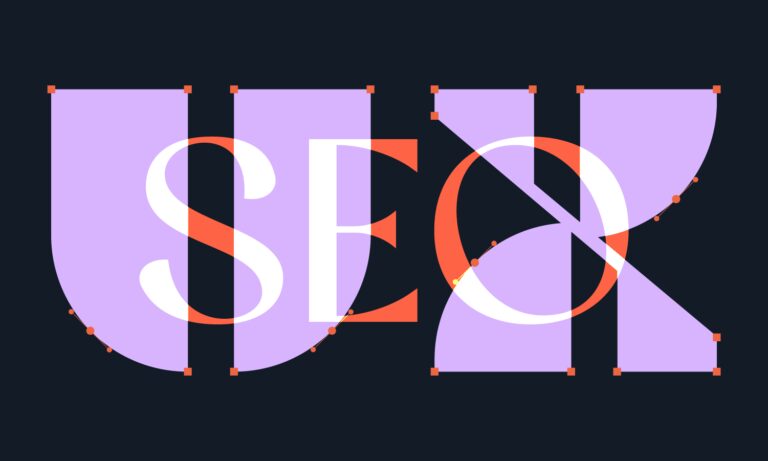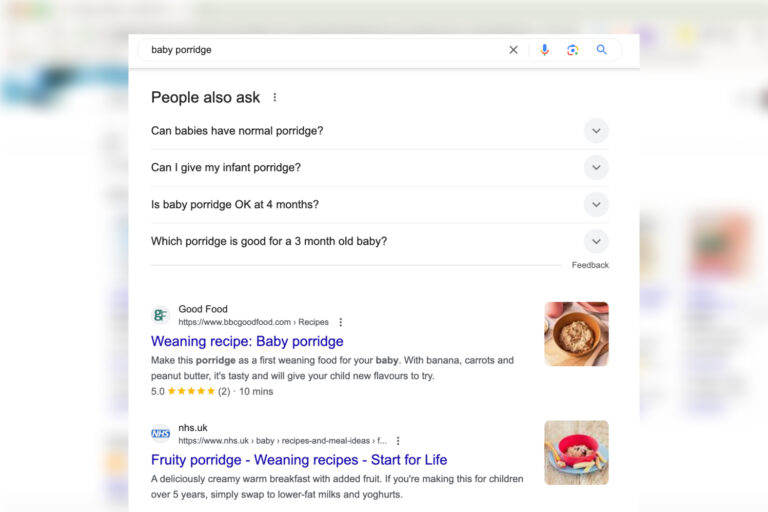How SEO has made me a better UX designer
5 min read

As a UX designer, understanding the connection between SEO and user experience has transformed the way I approach digital design.
At Abstrakt I’ve had the luxury of working alongside an SEO expert which has revealed to me that SEO insights aren't just about search rankings - they offer powerful, actionable knowledge to create a better user experience by understanding and anticipating user intent!
When we meet users' intent effectively, we don’t just improve rankings; we increase user engagement and satisfaction.
Tangible lessons I’ve gained from SEO
Over the past few months I’ve had an insatiable appetite for learning from my SEO peers and taking an SXO approach to projects. I’ve slurped on all the SERPS and gorged on GA4 to feed you the SEO takeaways that have altered my UX practice.
Understanding user intent has been a game changer for me
The biggest revelation I’ve had working with an SEO expert is the concept of user intent. Every search reflects a user’s underlying goal, and aligning a website’s content to these goals is critical. If someone arrives on a website and their intent isn’t met, they’ll leave — plain and simple. By understanding and mapping user intent, that is backed by search data, I can better focus on crafting content, structuring pages, and presenting information that meets the needs of the audience, positions the brand to be more relevant in search results and enhances the on-page experience.
Every search reflects a user’s underlying goal, and aligning a website’s content to these goals is critical.
SERP Analysis
One of the most helpful practices I’ve learned is to look at what the Search Engine Results Pages (SERPs) display organically for specific queries. SERPs reveal what Google understands as relevant content based on user intent. Ignoring ads and sponsored content, we can pay close attention to organic results to see what Google believes is the best response to a search term.
For example, if I’m designing a page for a brand in the baby food industry, I might look at what SERPs bring up for keywords like “baby porridge” as this reflects what Google understands a user’s intent to be based on their query.

We can see from this screenshot that the audience aren’t looking for products (transactional) they’re looking for recipes (informational). Google’s Helpful Content also shows us the types of questions people are asking around these terms. All of this insight can be folded into the design to ensure content meets these common queries and is information-led rather than transactional-led. This approach builds a brand online that is supportive and relevant, which leads to a trusting and loyal visitor that becomes a customer.
Popular Entry Pages (or landing pages)
Google Analytics 4 (GA4) has transformed how I understand landing pages and search intent. By analysing which pages users most frequently enter the website, I can identify opportunities to align content and design with user intent at different stages of the customer journey.
As an example, I might discover a page that receives minimal internal traffic but analytics reveal it is a significant entry point for visitors arriving via organic search.
Just because a page has low overall traffic doesn’t mean it lacks strategic value. It might serve a small but highly engaged audience. By focusing on why users land on this page and what they need, we can transform a low-traffic, high-entry page into a critical tool for user engagement and conversions.
UX outcomes as a result of this insight:
Add related content to guide users further into the site
Include unobtrusive CTAs relevant to the user's informational goals
Raise the prominence of this topic in the overall site architecture
Create more access points and interlinking to this content
Keyword Research
By understanding keywords that users search to enter a site, we can gain a clearer sense of what content people actually want.
Keyword research is another invaluable tool in the SXO toolkit. By understanding keywords that users search to enter a site, we can gain a clearer sense of what content people actually want.
For example, if I’m designing a website for a sofa company then keyword research might show that there are a high volume of searches for ‘bespoke corner sofas’. Understanding that ‘bespoke’ is a primary interest of our audience means we can tailor our language and page content to match these specific goals on-site.
An outcome might be to include ‘Bespoke corner sofas’ as a top level menu item for our audience. The UX improves because visitors can now find what they’re looking for more easily, instead of searching through generic categories.
Keyword research will also tell us the common related search terms. For instance, a popular search might be ‘How to measure up for a corner sofa’ so we can tailor the page content to answer this common query. By addressing specific user needs, the UX helps to convert visitors into buyers more effectively.

Final Thoughts
My journey into SEO has made me a more informed and versatile UX designer. By integrating SEO principles, I don’t just build intuitive and aesthetically pleasing interfaces — I craft experiences that align with user intent and enhance brands digitally.
At Abstrakt, we champion an SXO approach to web projects as this leads us to create search-friendly sites that also deliver an exceptional user experience.

Lucy Williams
A Principal UX and Digital Designer with almost two decades of experience. She loves balancing UX thinking with digital creativity to design innovative & vibrant products.
She has specialist knowledge in digital brands and sustainability.
Connect on LinkedIn.
What is SXO?
6 min read

Understanding user intent in SEO and SXO
5 min read
